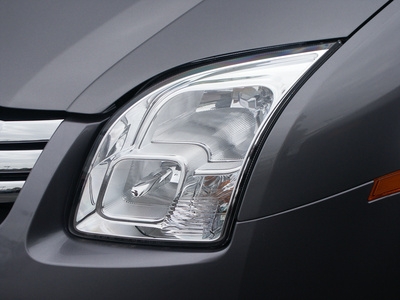
HID stands for high intensity discharge and means that an electric arc inside the headlight bulb is the source of light as opposed to a heated filament as in standard bulbs. The electric arc burns at a higher temperature and gives a bluer, more intense light.
HID bulbs require high voltage of around 25,000 V to start and 80 to 90 V AC to keep the arc going. The igniter and inverter modules (ballast) convert the car's 12 V DC to AC and step up the voltage to the required levels.
Once the electric arc is generated with a 25,000 V spark, the heat from the spark vaporizes mercury and other metal salts in the bulb. These metallic impurities help keep the arc going. The arc burns inside the bulb at a very high temperature and pressure.
The electric arc which produces the light in HID bulbs produces light which approximates daylight. New HID systems also use a lens to focus the light rather than a reflector. The combination of bright daylight and the more tightly focused beam from the lens let drivers see better at night.
HID bulbs last about three times longer than standard bulbs because there is no filament to burn out and, for the same wattage, HID bulbs give about three times as much light as other bulbs. The latter is especially important for reducing the power requirements in batteries and car charging systems. Because of these two advantages, HID bulbs are considered as environmentally friendly.